BBVA Foundation awards the discoverers of the biological mechanisms behind protein function and their role in the origin of multiple diseases
Ulrich Hartl, Arthur Horwich, Kazutoshi Mori and Peter Walter receive the BBVA Foundation Frontiers of Knowledge Award in Biology and Biomedicine for having successfully identified the cellular machinery that drives protein folding, an key process enabling them to fulfill their biological function. Their research, which disproved the findings of Nobel laureate Christian Anfinsen, has opened the door to the development of new experimental treatments for cancer and certain neurodegenerative diseases.
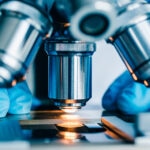
Firstly, professors Ulrich Hartl (Max Planck Institute of Biochemistry, Germany) and Arthur Horwich (Yale University, United States) identified the cellular machinery that drives protein folding. Subsequently, Kazutoshi Mori (Kyoto University, Japan) and Peter Walter (Altos Labs and University of California, San Francisco) discovered the response mechanism that targets wrongly folded proteins for repair or degradation.
These insights into a biological process so essential to life have enormous biomedical implications, since the molecular machinery that controls both protein folding and the response to failures in this mechanism is at the origin of multiple diseases, from cancer to neurodegenerative disorders like Alzheimer’s, Parkinson’s and amyotrophic lateral sclerosis (ALS) or the aging process itself.
Hence the awards committee for this sixteenth edition of the annual awards staged by BBVA, hailed the four awardees for their “groundbreaking findings,” which revealed “how cells control protein biogenesis and degradation, central not only to physiology but also disease pathogenesis and therapy.”
“The findings of the four awardees are important for our understanding of fundamental biology, and also because they lead to new understanding on diseases and how better to cure them in the future,” remarks Dario Alessi, committee member and Director of the MRC Protein Phosphorylation and Ubiquitylation Unit at Dundee University (United Kingdom).
“There’s huge interest, especially in the field of neurodegeneration, to maintain proteins properly folded in cells, and also to boost the process of removing unfolded proteins, because that is bad for the cells. And for cancer, it’s thought that if you can inhibit the enzymes that cause folding in some cancers, this could boost the ability to remove the cancer cells that are growing very fast and are very dependent on this process.”
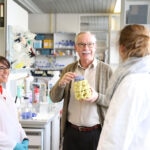
Ulrich Hartl (Max Planck Institute of Biochemistry, Germany) - BBVA Foundation
The ‘heretical’ discovery that disproved the conclusions of a Nobel laureate
In 1972, Christian Anfinsen won the Nobel Prize for a series of experiments that found that some small proteins folded spontaneously in a test tube. His work established the idea, later disproved by Hartl and Horwich, that all proteins folded spontaneously, even within the cell.
“The results of the first experiments were highly controversial for a couple of years,” Hartl recalls today. “There was a lot of skepticism, in particular from people who had been looking at the folding of smaller proteins that can fold spontaneously in the test tube.” But after successive experiments, he and Horwich finally convinced the scientific community that proteins indeed needed chaperones to fold themselves correctly in the far more adverse environment of the cell.
“The cell is a ruthless world, a place where there are great masses of proteins continually colliding with each other. The chaperones provide the proteins by various means with a supportive environment so they can fold themselves without unwanted interactions,” adds José María Valpuesta, head of the Department of Macromolecular Structures at the National Center for Biotechnology in Madrid (Spain).
An alarm system for breakdowns in the protein folding machinery
When proteins misfold and cannot fulfill their function, cells have a mechanism in reserve to either repair or, failing that, destroy them. This is the unfolded protein response (UPR), a process discovered in simultaneous but separate studies by Kazutoshi Mori and Peter Walter.
“Peter Walter and I identified the molecular mechanisms of the UPR, which allowed many researchers to work in this field,” explains Mori. Specifically, both men identified an enzyme, named IRE1, that acts as a sensor of unfolded proteins and sends alarm signals to the cell nucleus to correct the misfolding and eliminate misfolded proteins.
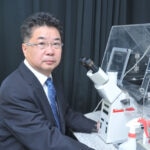
Kazutoshi Mori (Kyoto University, Japan) - BBVA Foundation
Both used yeast cells to start their research, and it was in them they found the sensors. “They’re sort of like little test tubes in a living system,” says Walter. “Very simple to manipulate for genetics and biochemistry. And later on, it turned out that pretty much all the salient features that we discovered in yeast hold true in pretty much every cell of the human body.”
New experimental treatments for cancer, Alzheimer’s and Parkinson’s disease
The four laureates are convinced that their findings on the molecular machinery that regulates both protein folding and its failures can drive the development of new, effective treatments against multiple diseases, and may even contribute to understanding and acting on the aging process.
“Parkinson’s disease, Alzheimer’s, Huntington’s, maybe amyotrophic lateral sclerosis, all have in common that, at a particular age, patients develop problems with their brain, with their nerve cells, because of the accumulation of misfolded protein aggregates. Generally, the likelihood that this will happen is much greater when you get old,” explains Hartl. The Max Planck Institute investigator believes for this reason that it may be possible to combat these conditions “by interfering with the production of the proteins that undergo aggregation.” In fact, he adds, significant experimental advances have been reported in the use of this therapeutic strategy against ALS and Huntington’s disease.
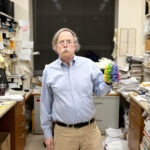
Arthur Horwich (Yale University, United States) - BBVA Foundation
Moreover, as misfolded protein aggregation apparently increases with age, Hartl sees some prospect that their findings could help slow down the aging process: “If you could enhance the cell’s own machinery that prevents the toxic aggregation of proteins, it would probably also be beneficial in terms of aging more generally.”
Mori, for his part, points to the fact that molecules with the ability to mitigate protein folding defects are beginning to be used against both ALS and certain liver disorders. “In the future, we hope to be able to treat various chronic conditions like neurodegenerative and liver diseases.”
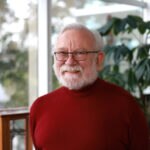
Peter Walter - (Altos Labs and University of California, San Francisco) BBVA Foundation
Walter, finally, talks about how this therapeutic avenue could advance the fight against cancer. “Cancer cells,” he explains, “have an intrinsic problem, in that they are genetically unstable. They make many unfolded proteins, proteins that cannot assemble correctly. And the unfolded protein response now provides an inappropriate set of protections to these cells, and that keeps them alive, despite the fact that normally this response would be programmed for them to kill themselves.” So it could be that “inhibiting that response would take away that inappropriate growth advantage and allow us to affect cancer cells very selectively in treating the disease.”